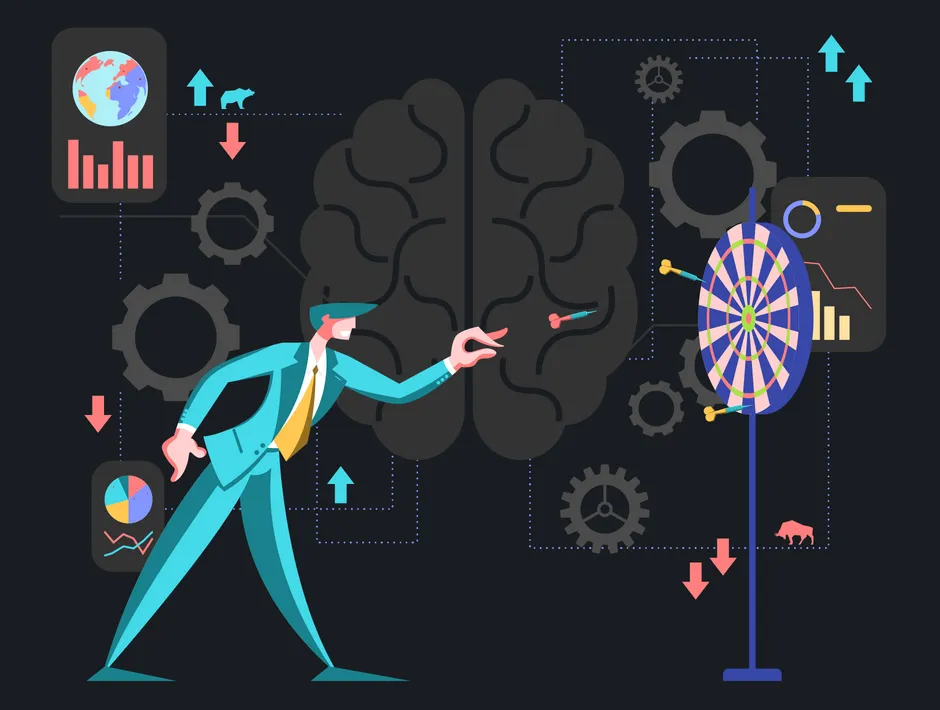
Dec 12
preview

A lot of ink has been spilled over the plight of traditional stock pickers: their performance has been subpar, their fees are declining, and their clients are moving to passive strategies...
Burton Malkiel, the Princeton University economist who wrote the 1973 investing classic A Random Walk Down Wall Street, famously compared the prowess of money managers to a blindfolded monkey throwing darts to pick stocks. Since then, popular media has gleefully reminded their audiences that dart throwing outperforms hedge fund stock picking stars. So, will the asset management industry finally throw in the towel and admit that humans can no longer add any value to stock selection?
It’s an interesting question, and some new evidence has emerged on that front. A paper by Akepanidtaworn et al., Selling Fast and Buying Slow, showed that portfolio managers can outperform a passive strategy quite convincingly. However, their share selling tactics not only underperform passive, they actually also do worse than a “dart throwing” strategy where stocks are picked randomly. The results suggest that PMs must inherently think and prioritize the two decisions differently; they appear to primarily focus on searching for the next great idea to add to their portfolio. The authors conclude that their finding isn’t due to an asymmetry in skill - buying vs. selling - but is instead a consequence of limited cognitive resources.
This is a fascinating hypothesis: if mediocre returns from stock picking are in fact due to limited resources (time and brain capacity) and not inherent lack of skill, there may still be hope for active investing. In particular, just like we have seen tremendous productivity enhancement from man-machine models in industries ranging from healthcare to autos, could the same be true in asset management? In other words, rather than handing the Bloomberg terminal to a machine, could a man-machine combination dominate both passive and machine-only strategies?
If cognitive overload is the reason for underperformance, machines can surely help. Not surprisingly, surveys of portfolio managers show that the number one task where they would like AI help is idea generation. This is consistent with the finding in Akepanidtaworn et al.’s paper. But what if AI could also improve their stock selling? The evidence shows that portfolio managers have a higher propensity to sell assets with extreme returns. This phenomenon - that active managers often sell at the lows - has been well documented. One reason for this behavior is that in a fast-moving market, portfolio managers often feel overwhelmed and want to end the pain. In a famous survey of investors on the day of the 1987 crash, Robert Shiller finds that almost half of the solicited institutional investors experienced real anxiety: “difficulty concentrating, sweaty palms, tightness in chest, irritability, or rapid pulse.”
Machines can aid in a few aspects. Firstly, they excel at collecting and analyzing data and can do so continuously, 24/7. This contrasts with the typical pattern of an active investor: research is front-load-loaded before the purchasing decision, after which attention turns to researching other potential trades. This pattern of behavior makes it easier for machines to highlight situational changes post trade implementation, particularly when there’s been a deterioration in fundamentals or macroeconomic context. At TOGGLE, our AI analyst is monitoring 850,000 data series across 6,000 assets, alerting users to waning stock price momentum, changing positioning levels, and spikes in volatility, as well as changes in monetary conditions that may have implications for the broader equity market.
Machines can also help investors in fast moving markets: systems - because they are gathering data continuously - can at a moment’s notice put a sell-off in to context and help investors decide if they are correct in exiting a position. By scanning a stock’s price history, TOGGLE identifies whether similar events have previously resulted in further price declines or whether the bulk of the move is likely behind them. The machine can instantly analyze hundreds of fundamental variables - valuation, relative performance, macroeconomic conditions - and provide a more complete picture of the likely forward looking price pattern.
Risk and trade management isn’t a glamorous application of AI - at least compared to idea generation - but, as most successful investors will tell you, it’s the most important one...and it might just be the medicine active stock picking needs to restore its former glory.
Up Next

Dec 12
preview